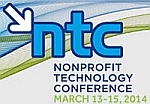An era of profound change
The tech sector has been experiencing a variety of significant and (pardon the cliche) “disruptive” changes. Changes that have roiled the IT Industry, putting well established companies such as Nokia and RIM (the makers of BlackBerry devices) nearly out of business, and calling into question once-dominant firms like Microsoft and Dell.
These changes are also posing serious challenges for IT Departments. IT Leaders are trying to plan for an environment that seems to be changing every 6 months. Which solutions are still going to be around over the next 5 years? Which approaches to managing IT are going to be relevant? How is the landscape going to change?
In the face of such uncertainty, it is perhaps helpful to consider the following advice from Amazon founder and CEO Jeff Bezos, originally quoted on fool.com:
“I very frequently get the question: ‘What’s going to change in the next 10 years?’ And that is a very interesting question; it’s a very common one. I almost never get the question: ‘What’s not going to change in the next 10 years?’ And I submit to you that that second question is actually the more important of the two – because you can build a business strategy around the things that are stable in time.”
What’s not going to change?
So consider what your organization and its staff will need in 5 years. I would suggest that over the next 5 years:
- Non-profit organizations and staff will continue to rely on data and information solutions to accomplish their missions
- Organizations will require solutions that are manageable, secure and integrated
- Staff will seek the easiest, most personally efficient way to do their work
- IT Leaders will need to balance the tension between organizational needs (2) and personal needs (3)
If we consider these to be the constants, then how does this help IT leadership to plan for the future? Most importantly, I think, it highlights two significant challenges that IT Departments will face.
Challenge #1: Self-selected technology (aka BYOD/BYOD)
As individual staff become more comfortable and familiar with consumer technology, they become more willing and able to seek out their own solutions. This is particularly true if their organization is stuck with older technology that is inflexible and difficult to use. This is already happening. (It is probably happening on your network. You might be doing it as you read this!) This dynamic is at the heart of BYOD/BYOA.
BYOD (aka Bring Your Own Device) refers to the phenomenon in which staff prefer to use their own device (laptop, tablet, smartphone, etc.) to do their work, rather than the one provided by the company. This is generally because it is easier (and therefore more efficient), more familiar, more functional and/or more pleasurable.
BYOA (aka Bring Your Own App) refers to the phenomenon in which staff prefer a 3rd party app (Evernote, Wunderlist, DropBox, Google Apps, Any.do are just a few among the more popular) to one that is (or is not) provided by the organization. This is also because it is generally easier and/or provides greater functionality. Consumer apps, in particular, are often designed to be easily used by tech novices for a single purpose. This generally makes them more efficient for performing a particular task.
Because of the open and distributed nature of BYOD/BYOA solutions, and their propensity to happen without the awareness of the IT department, it can become a threat to the security and confidentiality of organizational data. Given their emphasis on the consumer market, BYOD/BYOA can also inadvertently create permanent data silos that can be difficult to integrate down the road.
Challenge #2: Data dispersion
Data silos, of course, are not a new phenomenon. Data systems have always been subject to being hidden and disconnected, but it becomes more difficult to analyze and manage with cloud-based solutions.
A decade ago, one could safely assume that all staff were spending 90% of their time using organization-owned/configured/managed devices, storing 90% of their data on organization-owned/configured/managed storage that was in a single physical location, with access controlled centrally by a single administrator. Even if your data was in a home-brew Access database, an Excel spreadsheet and a fundraising system, it was at least on a server you could physically locate.
This is no longer the case. The situation has become more complex and sophisticated, and so the tools and approaches used by organizations need to become more sophisticated as well.
14NTC Breakouts
 If you are interested in learning more about these topics and approaches that your organization can take to addressing them in an effective manner, please consider joining me for two Breakout Sessions at the NTC 2014 in Washington, DC this year.
If you are interested in learning more about these topics and approaches that your organization can take to addressing them in an effective manner, please consider joining me for two Breakout Sessions at the NTC 2014 in Washington, DC this year.
In the first session, Build your own BYOD (#14NTCBYOD), we will tackle the challenges of BYOD/BYOA head on by working to develop an approach to managing device and app proliferation with policies and procedures that work for your unique non-profit.
In the second session, Lost in the Clouds: Introduction to Cloud Brokering and Data Governance (#14NTCdatagov), Cathy Folkes from Kersten Direct, Michael McCarn from the American Institute of Cancer Research and I will discuss best practices for data governance, management and integration in this brave new world of cloud-based solutions.
